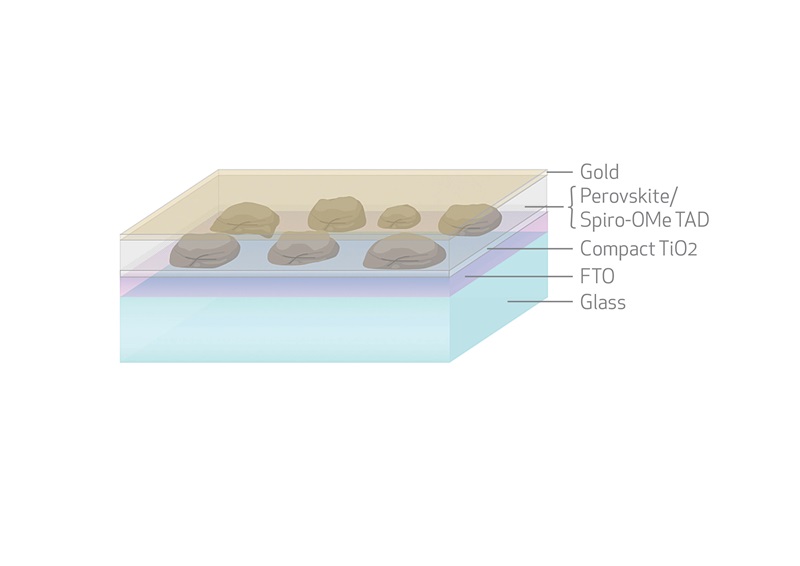| A structure that offers a clear advantage: In typical perovskite solar cells, light comes through a transparent fluorine-doped tin oxide (FTO) anode and TiO2 electron-transport layers, forming excitons in the photosensitive perovskite material. Electrons travel then through the TiO2 towards the anode, while holes move through polyaromatic transport material such as Spiro-OMeTAD, to a gold cathode, which can also be transparent. However, perovskite compounds boast properties such as long carrier lifetimes that enable innovation in cell designs. Credit: Oxford PV. |
